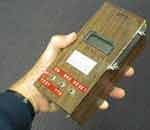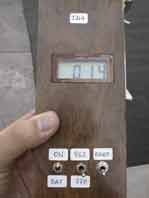More than two years after road access and electrical power to the Mauna Loa Observatory was cut off by lava flows, NOAA staff continue to make critical measurements of the atmosphere and other environmental variables at the remote site.
In 2023, observatory staff installed solar panels at the site and resumed some measurements, including the independent carbon dioxide monitoring programs run by the Global Monitoring Laboratory and Scripps Institution of Oceanography, as well as other atmospheric measurements.
Construction of a temporary road to access the observatory site is anticipated to begin in summer 2025.
Media can contact: Theo Stein (303) 819-7409 (theo.stein@noaa.gov)
Organization(s):
 National Oceanic
and Atmospheric Administration (NOAA), Earth System Research Laboratory (ESRL)
National Oceanic
and Atmospheric Administration (NOAA), Earth System Research Laboratory (ESRL)
What does this program measure?
Solar Turbidity.
How does this program work?
When this project was active, turbidity was measured three times per week at MLO with J-202 and J-314 sunphotometers at 380,500,778,862 nm, and continuously with MOD three-wave sunphotometer 380,500,778 nm; narrowband
Why is this research important?
Are there any trends in the data?
How does this program fit into the big picture?
What is it's role in global climate change?
Comments and References
This program is no longer active.
Lead Investigator(s):
Dr. Ellsworth Dutton
303-497-6660
MLO Contact(s):
Paul Fukumura
808-933-6965
Web Site(s)
not applicable
Date Started
RETIRED


